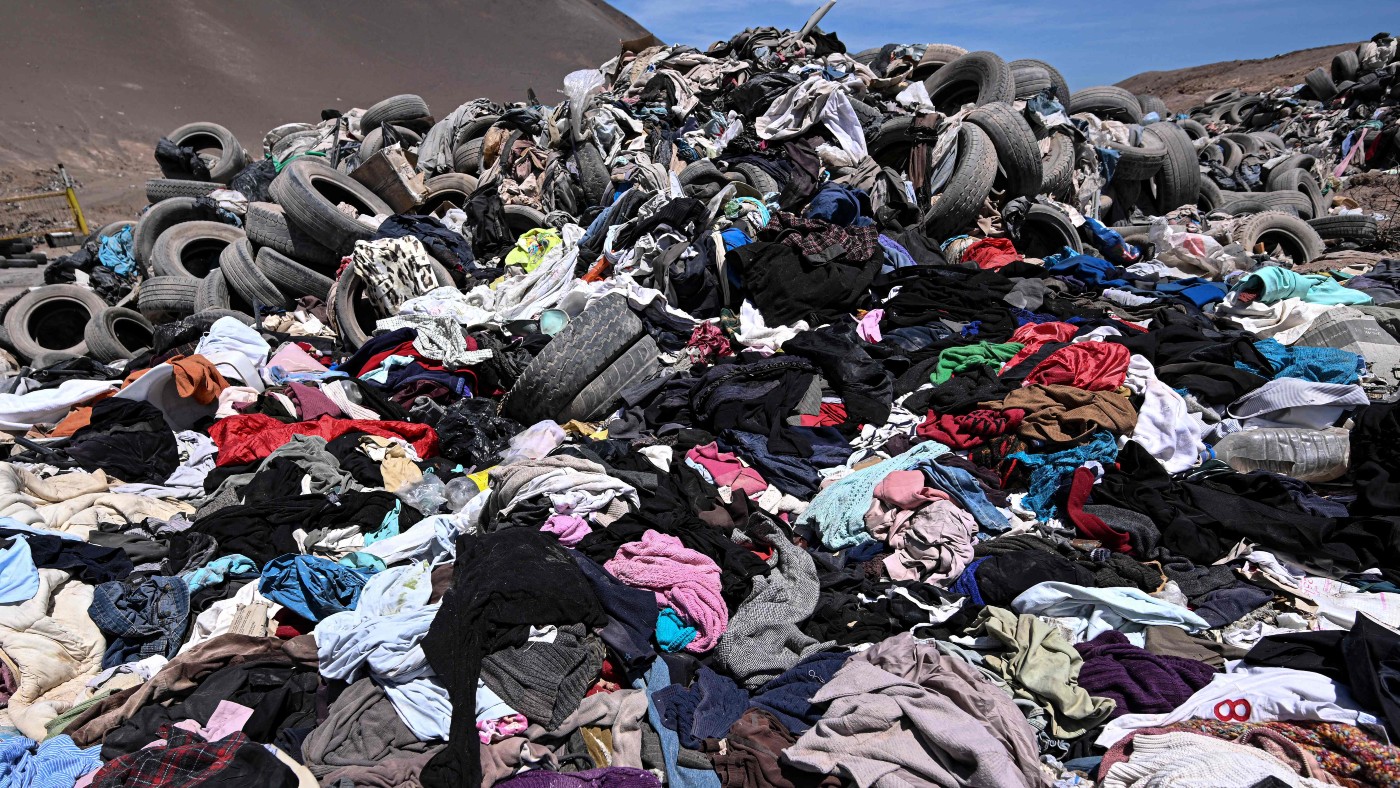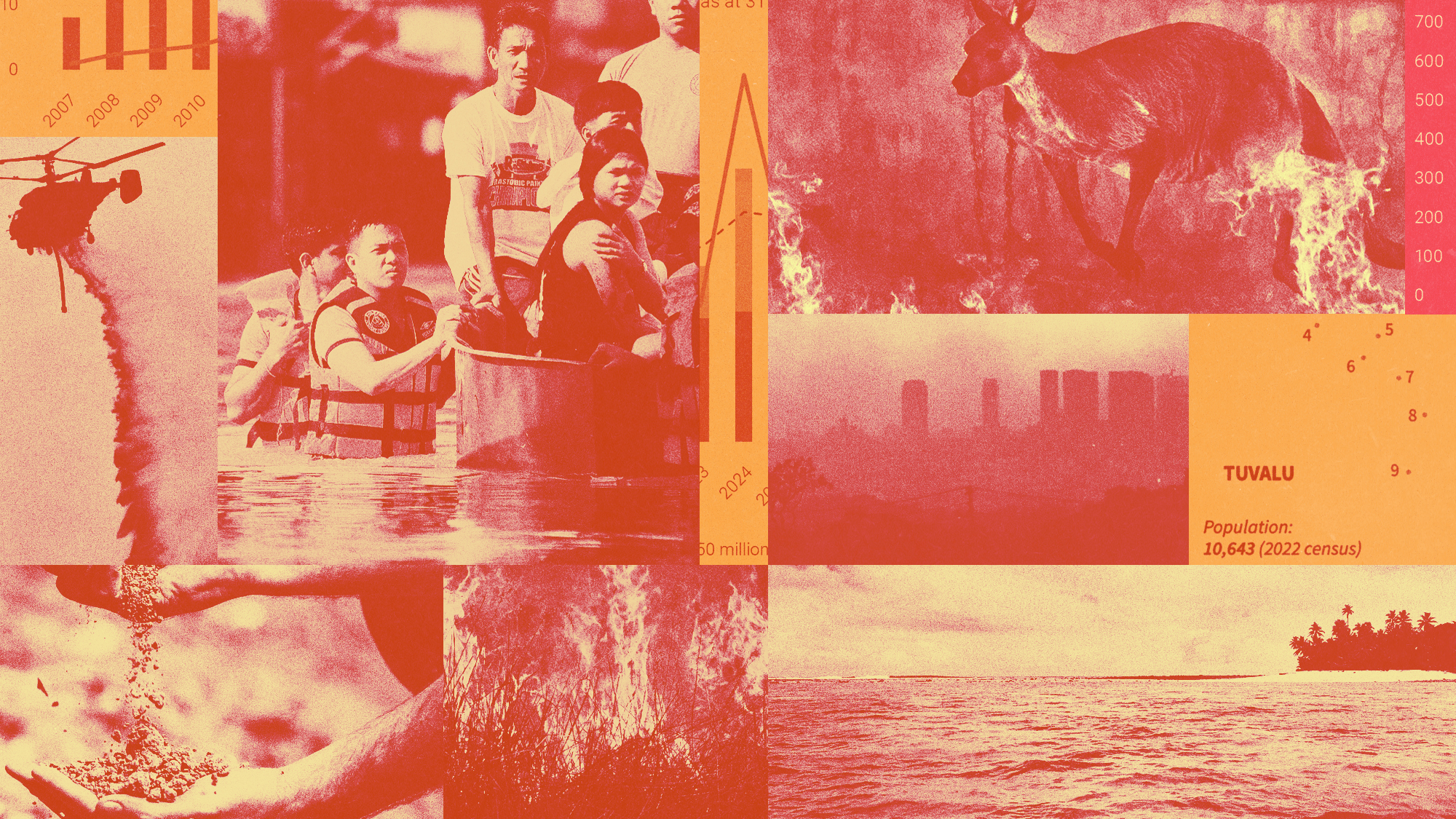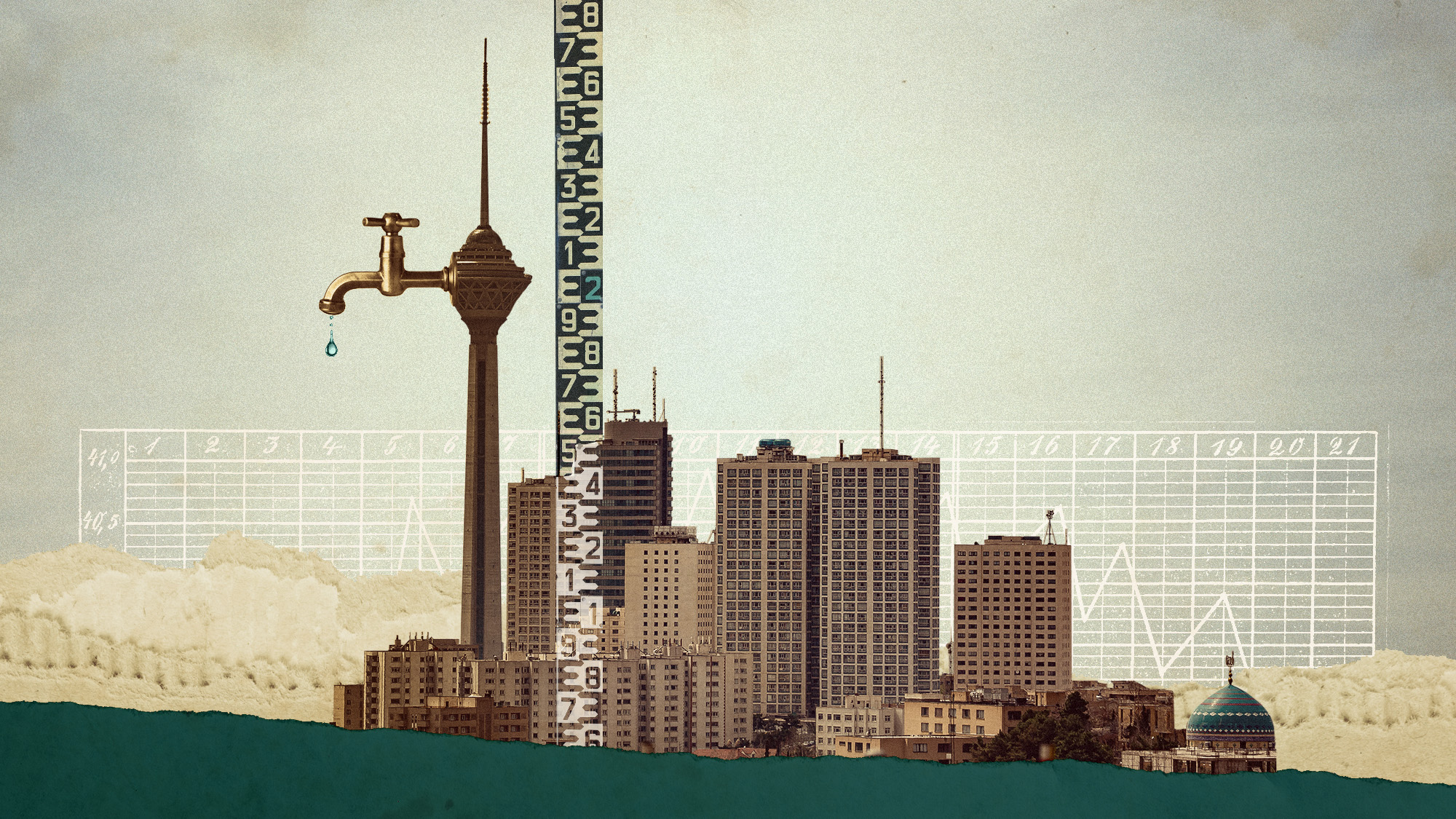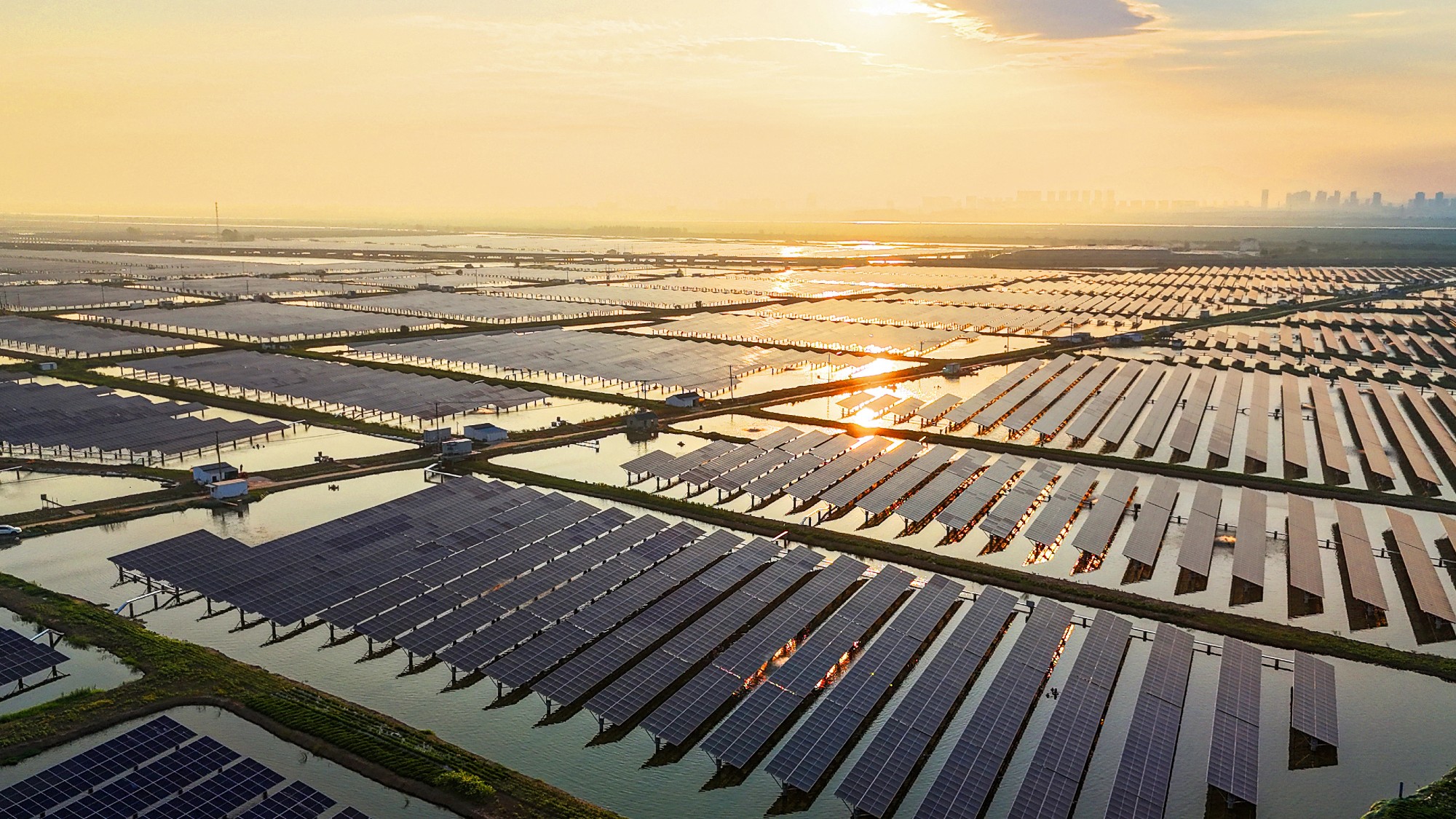The curious return of fast fashion
Rise of Shein shows demand for low-price fashion remains strong despite huge landfill dumps and high global emissions

In Chile, something peculiar is happening when it comes to fashion – and the results can be seen from outer space.
Slowly but surely, a “giant dump” of unused clothing is piling up in the Atacama Desert, and this is “now clearly visible to satellites”, Insider reported.
This is a so-called “fast fashion landfill”, where discarded or unused clothing is accumulating, reaching 39,000 tons so far, the website added.
The Week
Escape your echo chamber. Get the facts behind the news, plus analysis from multiple perspectives.

Sign up for The Week's Free Newsletters
From our morning news briefing to a weekly Good News Newsletter, get the best of The Week delivered directly to your inbox.
From our morning news briefing to a weekly Good News Newsletter, get the best of The Week delivered directly to your inbox.
The clothes mountain is a physical manifestation of “rampant consumerism in the clothing industry”, said France 24, which is having a “disastrous effect on the environment”. These rubbish dumps are comprised of clothes from all over the world, and cannot be disposed of in a safe manner as it is “not biodegradable and has chemical products”.
The United Nations warned the result is an “environmental and social emergency”. But in the place where “fast fashion goes to die”, the matter continues to spiral out of control – and the “scale is breathtaking”, National Geographic added.
‘High human cost’
The fast fashion problem extends globally. Ghanaian clothes traders have visited Brussels to warn of the “‘environmental catastrophe’ of dumping vast amounts of textiles in the west African country”, said The Guardian.
It is estimated that approximately 100 tonnes of second-hand clothing is discarded every day in the nation’s capital, Accra, the newspaper added, and fast fashion producers are being urged to shoulder the blame.
A free daily email with the biggest news stories of the day – and the best features from TheWeek.com
The fashion industry is “responsible for 8-10% of global emissions”. There are growing fears about how fast fashion could impact climate change, the BBC reported, with the use of raw materials being the number one culprit.
Cotton is estimated to use “about 2.5% of the world’s farmland”, while the production process for clothing requires “43 million tonnes of chemicals a year”, the broadcaster said.
With clothes produced at a faster rate, companies are churning out waste and using valuable resources in larger quantities.
Similar landfill mountains have been observed in Nairobi, Kenya, reported the Daily Mail, as exporting junk clothes to less developed countries “has become an ‘escape valve’ for ‘systemic overproduction’”. Investigators said the “stealth waste stream should be illegal”.
A lack of workers’ rights and poor working conditions have also been cited as a symptom and side effect of fast fashion, with sweatshops and textile factories under the spotlight.
“My fingers were bleeding, but they forced me to work gruelling hours for less than two dollars a day,” Nasreen Sheikh, a Nepalese former child labourer, told El País. The then nine-year-old “slept, ate and worked in the same room”, and now “denounces the high human cost of fast fashion in the Global North”.
Fast fashion’s ‘curious comeback’
“If consumers want to keep up with the Jones’, or the Kardashians, who is anyone to say them nay?” argued Walter Block in an article for the Foundation for Economic Education.
For Block, fast fashion is not “an example of capitalism gone wild”, despite the “present hissy fit” to the contrary. Instead, criticisms of fast fashion “often crumble in the face of basic economics”.
Those who spearhead so-called fast fashion brands have also defended their processes. John Lyttle, CEO of Boohoo, told BBC Radio 5 Live’s “Wake Up to Money” in 2021 that immediacy is the “biggest trend”.
It is a “curious comeback” for fast fashion, said The Wall Street Journal, but one that can be attributed to the online apparel retailer Shein. The store brought in “$23 billion of revenue” last year, making it “worth more than H&M and Zara combined”, the paper reported.
The demand for these brands remains high, as Shein plans to “open 30 stores this year to rival Primark”, said the Daily Mirror. “The temporary stores will open across the EMEA (Europe, the Middle East and Africa) region as Shein looks to increase its high street presence”, the newspaper added.
Shein, though, is also under the microscope “for its alleged reliance on supply chains that run through the Xinjiang region of China, the site of widespread human rights abuses against the Uyghur minority”, said Politico.
Rebekah Evans joined The Week as newsletter editor in 2023 and has written on subjects ranging from Ukraine and Afghanistan to fast fashion and "brotox". She started her career at Reach plc, where she cut her teeth on news, before pivoting into personal finance at the height of the pandemic and cost-of-living crisis. Social affairs is another of her passions, and she has interviewed people from across the world and from all walks of life. Rebekah completed an NCTJ with the Press Association and has written for publications including The Guardian, The Week magazine, the Press Association and local newspapers.
-
 Mind-expanding podcasts you may have missed this fall
Mind-expanding podcasts you may have missed this fallThe Week Recommends True crime, a book club and a therapeutic outlet led this fall's best podcasts
-
 ‘It’s critical that Congress get involved’
‘It’s critical that Congress get involved’Instant Opinion Opinion, comment and editorials of the day
-
 Blackouts: Why the internet keeps breaking
Blackouts: Why the internet keeps breakingfeature Cloudflare was the latest in a string of outages
-
 Death toll from Southeast Asia storms tops 1,000
Death toll from Southeast Asia storms tops 1,000speed read Catastrophic floods and landslides have struck Sri Lanka, Indonesia, Thailand and Malaysia
-
 Can for-profit geoengineering put a pause on climate change?
Can for-profit geoengineering put a pause on climate change?In the Spotlight Stardust Solutions wants to dim the sun. Scientists are worried.
-
 How will climate change affect the UK?
How will climate change affect the UK?The Explainer Met Office projections show the UK getting substantially warmer and wetter – with more extreme weather events
-
 Can the UK do more on climate change?
Can the UK do more on climate change?Today's Big Question Labour has shown leadership in the face of fraying international consensus, but must show the public their green mission is ‘a net benefit, not a net cost’
-
 Did Cop30 fulfil its promise to Indigenous Brazilians?
Did Cop30 fulfil its promise to Indigenous Brazilians?Today’s Big Question Brazilian president approves 10 new protected territories, following ‘unprecedented’ Indigenous presence at conference, both as delegates and protesters
-
 Can the world adapt to climate change?
Can the world adapt to climate change?Today's Big Question As the world gets hotter, COP30 leaders consider resilience efforts
-
 Taps could run dry in drought-stricken Tehran
Taps could run dry in drought-stricken TehranUnder the Radar President warns that unless rationing eases water crisis, citizens may have to evacuate the capital
-
 The future of the Paris Agreement
The future of the Paris AgreementThe Explainer UN secretary general warns it is ‘inevitable’ the world will overshoot 1.5C target, but there is still time to change course